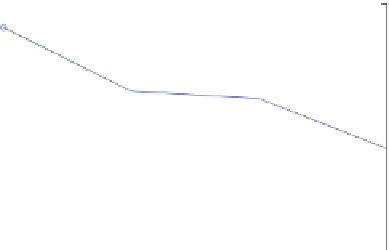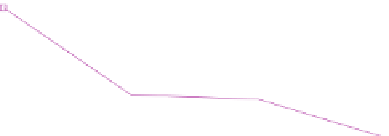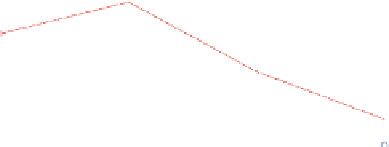Information Technology Reference
In-Depth Information
Table 5.1 Classification accuracy for experiments obtained by non-parametric Mixca through
the different levels of the material quality control problem
%
general
Levels of quality of material
Material
condition
96
100
One defect 97
62
Kind of
defect
88.9
100
Hole 82
Crack 88
60
Defect
orientation
X axis
7
2
Y axis
75
XY plane
8
4
ZY plane
9
0
XZ plane
8
9
85.4
100
58
Defect
dimension
P
62
HP
50
P
48
HP
59
P
93
HP
63
P
68
HP
78
P
95
HP
82
78.1
100
54
Abbreviations P passing through, HP half-passing through
100
95
Exp- Mixca-JADE
Exp- Mixca
Exp- MLP
Exp- LDA
Sim- Mixca-JADE
Sim- Mixca
Sim- MLP
Sim- LDA
90
85
80
75
70
65
60
55
Level 1
Level 2
Level 3
Level 4
Classification level
Fig. 5.11 General results of the classifiers in the different levels of classification. Abbreviations:
''Exp'': Experiments, ''Sim'': Simulations, ''Mixca'': non-parametric Mixca
Table
5.2
contains the confusion matrix obtained by non-parametric Mixca in
the defect orientation level. The homogeneous class is perfectly classified, and the
three classes corresponding to cracks are well classified. However, hole classes are
frequently confused with crack classes since the defect geometry does not produce
discernible wave propagation patterns. In addition, the multiple-defect class is
sometimes confused with cracks. This is due to the fact that particular patterns of
one of the defects inside some multiple-defect specimens are more dominant in the
spectra, causing multiple-defect spectra to be similar to crack spectra.
5.4 Conclusions
ICAMM is an extension of ICA that considers a mixture of ICAs. Essentially,
ICAMM is a method for versatile modelling of multivariate data densities that takes
advantage of the statistical independence achieved in every ICA component. Thus,
the very complex problem of modelling statistically-dependent multidimensional















































































































































Search WWH ::

Custom Search